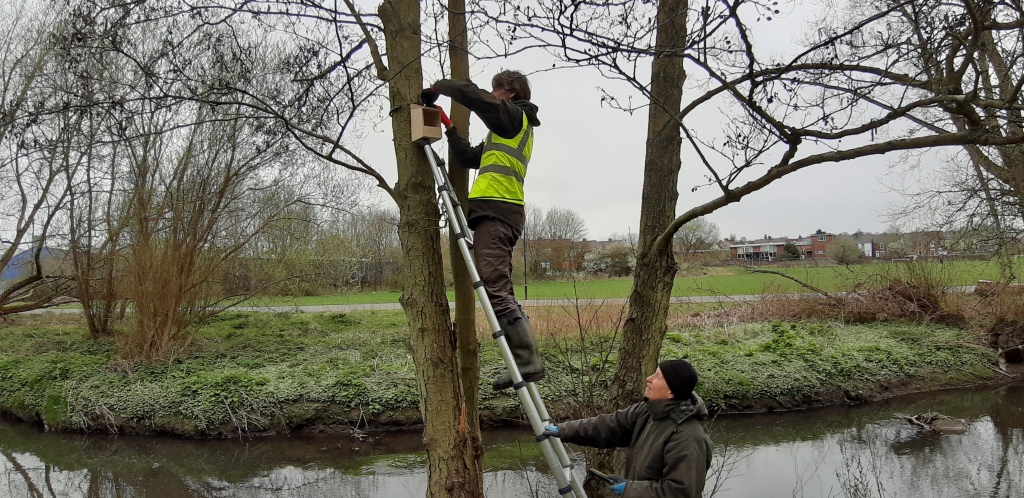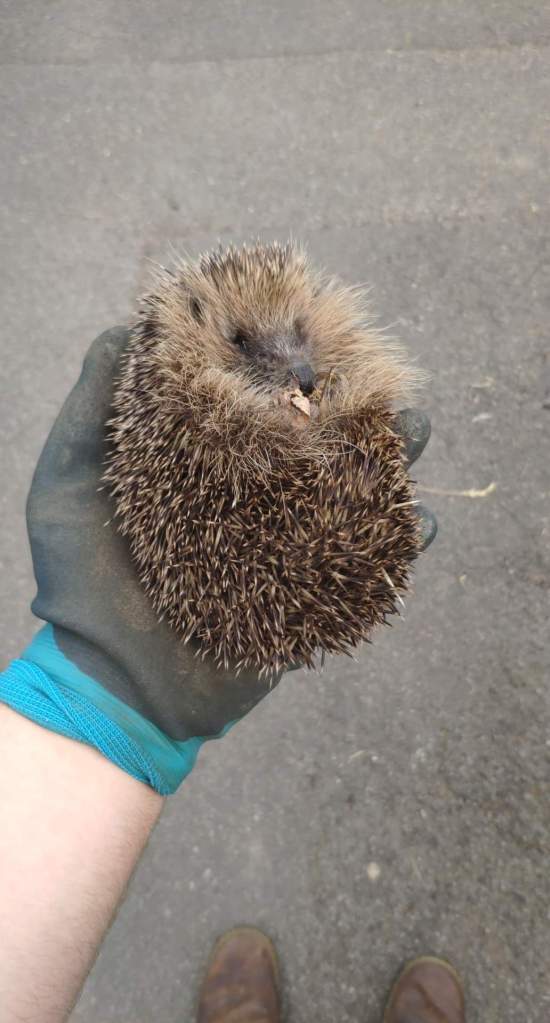The Rivers Trust Movement, comprised of more than 60 local Rivers Trusts, has had eight successful applications to the Green Recovery Fund. This unprecedented financial support from the Heritage Lottery Fund, Natural England, Forestry Commission, and the Environment Agency will help to improve river environments for people and wildlife across England.
The second round of awards in the fund, announced yesterday, represents a total of £40 million to be distributed to 90 projects across the country. It will support a range of nature conservation and recovery and nature-based solutions projects, which will contribute towards the Government’s wider 25 Year Environment Plan commitments.
Eight projects delivered by Trusts across England and the Welsh border region will use the funding to deliver a range of vital benefits, including restoring river biodiversity, bettering canoe access on a precious chalk steam, and a host of community health and wellbeing initiatives.
The successful Trusts from the Rivers Trust movement were:
- Bristol Avon Rivers Trust
- Don Catchment Rivers Trust
- Mersey Rivers Trust
- Norfolk Rivers Trust
- Ribble Rivers Trust
- River Waveney Trust
- Welsh Dee Trust
- Tees Rivers Trust
Further details about these initiatives is provided below.
Mark Lloyd, CEO of The Rivers Trust, said: “As The Rivers Trust movement, our great strength is an ability to deliver real river improvements at scale. This funding is invaluable in helping our incredible local Trusts to do exactly that, and I can’t wait to see the results.”
Bristol Avon Rivers Trust Simon Hunter, Chief Executive Officer said: “The Green Recovery Challenge Fund will enable us to deliver suite of nature-based solutions in the Chew Valley, including planting of riverside trees and raising awareness of the actions local communities can take to improve the health of our local rivers. This project will deliver towards the wider River Chew Reconnected plan that aspires to create a healthy and resilient river and catchment; where nature thrives and which communities can access and enjoy, both now and in the future.”
David Diggens, CEO of Norfolk Rivers Trust, said: “Together with our partners, we’re more than delighted to receive this magnificent grant which will enable us to deliver an ambitious and significant landscape-scale restoration project to enhance these two river catchment areas in North Norfolk as part of the Green Recovery. This funding comes at a crucial time when our water environments have been overwhelmed by a number of threats including pollution, development, climate change and biodiversity loss.”
Martha Meek, River Waveney Trust Development Manager, said: “This is fantastic news for the River Waveney Trust. We are a small organisation and this will make a huge difference to what we can achieve. We are delighted to have received funding for a project that has multiple benefits to many river users, as well as our local environment. Our thanks go to the Green Recovery Challenge Fund for choosing our project and we very much look forward to recruiting our third member of staff.”
Rachel Walker, Operations Director at Don Catchment Rivers Trust, added: “We are so pleased the fund chose to invest in our Trust. We focused on community wellbeing throughout the pandemic, and now we are thrilled to be able to offer new jobs and opportunities in the Rivers Trust and expand our work for the benefit of the people living in the Don Catchment.”
Don Catchment Rivers Trust’s Green Recovery Fund scheme will see the Trust working at the top and bottom of the catchment. On the river Rother the fund will pay for phase II of the Trust’s ‘Slow the Flow to the Calow’ Natural Flood Management project at Grassmoor Country Park near Chesterfield. This will include community engagement in citizen science, and provide a Kick Start post for a young conservationist. In the lower Don the Trust will expand its popular volunteering scheme and engage with landowners to implement a programme of community based NFM along streams leading to the Don. The project will provide an opportunity for a new project officer to lead on community engagement and volunteering.
Other Rivers Trust projects:
Bristol Avon Rivers Trust (BART) will receive £97,700 for its ‘River Chew Re-connected’ project, which will deliver two river habitat enhancement schemes. 500m of riparian enhancements will improve aquatic, marginal and terrestrial habitat. This includes the planting of approximately 2,000 riparian trees and shrubs, and the creation of several seasonal ponds across two sites to reduce surface water runoff from agricultural fields and increase floodplain habitat diversity. Alongside physical works on the ground, BART will deliver a community Sustainable Water Usage project that will engage local communities and schools to also take action to protect our rivers, delivered with a new part-time Community Engagement Officer.
Mersey Rivers Trust is delighted to announce that its ‘Bollin Biodiversity’ project is to receive £109,000. Working in partnership with the River Bollin Environmental Action and Conservation (BEACON) group, Cheshire East Council, Tatton Estates, National Trust and Natural England, the funding will help bring the biodiversity of the River Bollin back to health. It will also engage more people with their local river for health, wellbeing and recreation. Local volunteers will help reverse the decline of native plant species along the River Bollin, planting native trees and wildflowers to improve river valley habitats. We will also restore river reaches prone to erosion or siltation. The funding will create new reedbeds to tackle diffuse pollution and improve the condition of the internationally important Tatton Mere wetland site.
Norfolk Rivers Trust and the Norfolk Coast (AONB) Partnership will receive £885,400 for the ‘Norfolk’s Two Chalk Rivers – Restored, Revitalised, Resilient’ project to deliver 20km of river restoration on the Hun and Stiffkey – two chalk rivers of international importance. The project will implement a range of nature-based solutions to improve water quality, biodiversity and habitat connectivity with the added benefit of capturing carbon and mitigating the impacts of climate change. A comprehensive community plan has been created which includes a variety of training workshops including filmmaking, species identification surveys and riverfly monitoring. Along with many opportunities for volunteers, the project will provide 6 jobs and 4 kickstart placements for 16–24-year-olds.
Ribble Rivers Trust will use their funding as part of the Health & Environmental Action Lancashire partnership to build on their developing evidence base on health and wellbeing to to inspire communities, safeguard jobs, & connect people with nature through education, training, recreation & volunteering.
The River Waveney Trust’s ‘Canoe Access and Biodiversity’ project will improve 22.5 miles of public canoe and paddle access on the River Waveney, one of only 12 rivers in the UK with a public access arrangement. This will involve a long-term ‘River Wardens’ volunteer citizen science programme, which will survey the river for obstacles and restoration opportunities. Biodiversity will be enhanced along the river by restoring the channel and planting trees to create river corridors and buffers. Not only will this project fund one new full-time role at the River Waveney Trust, bringing the team of staff to three members, it will bring paddlers and conservation into partnership, empowering volunteers to take action for nature.
Welsh Dee Trust will use the funding for their ‘Dee Blue Recovery’ project.
Tees Rivers Trust will receive £1,088,100 for the ‘Fish for Tees’ project, a source to sea conservation project which will deliver better green connectivity between uplands and estuarine projects. It will create intertidal habitat and improve fish passage along the river. It will increase at-risk habitat and species, complementing similar innovative projects in the region to build a resilient mosaic of sea grass meadows and native oyster reefs. It will also directly deliver new methods of carbon capture, reduced flood risk and functioning river estuarine and marine ecosystems.













You must be logged in to post a comment.